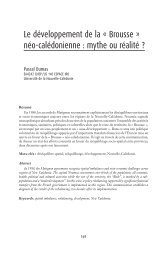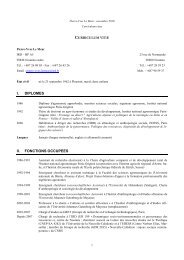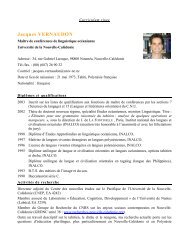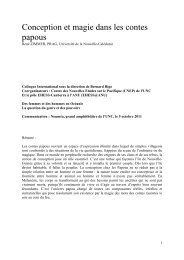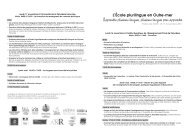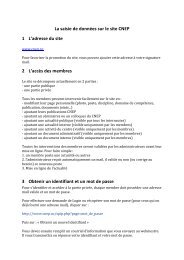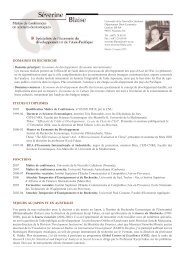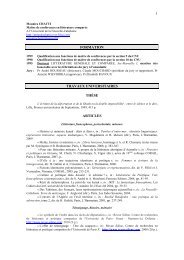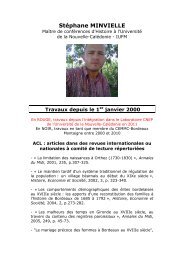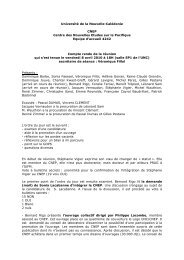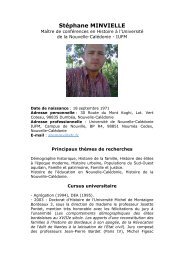LATITUDE AND LONgITUDE Of THE PAST - Centre des Nouvelles ...
LATITUDE AND LONgITUDE Of THE PAST - Centre des Nouvelles ...
LATITUDE AND LONgITUDE Of THE PAST - Centre des Nouvelles ...
You also want an ePaper? Increase the reach of your titles
YUMPU automatically turns print PDFs into web optimized ePapers that Google loves.
178Vincent Clémentdarkest paintings. The Martinique of Césaire is definitively no Eden. Itis only an “absurdly missed version of the paradise” as he says ironically(Césaire 2006:97).For Césaire, Martinique is above all a land of violence. First, theviolence of nature: located along the Atlantic Ocean, the East coast isregularly crossed by devastating hurricanes. In the North of the island,the Montagne Pelée represents a real threat. On 8 May 1902, an eruptionof the volcano burnt to the ground Saint-Pierre, which was the capitalof the island, and caused the death of 29,000 people. Césaire draws thestrength of his poetry from the violence of nature:And suddenly, strength and life charge me [...] and the enormous lungof the cyclones breathes and the hoarded fire of volcanoes and thegigantic seismic pulse now beats the measure of a body alive in my firmblazing. (Césaire 2007a:125).Violence also concerns the social relationships. On this sugar island,young Aimé was revolted by the miserable living conditions of the canecutterswho worked on the plantations, all the more so as racial discriminationswas superimposed on social inequalities: the Congo Blacks wereat the bottom of the social ladder, the Mulattos in the middle and theWhites at the top. In the 1930s, the White Creoles of Martinique (calledBékés) kept a stranglehold on the sugar economy (Benoist 1972:82).For the <strong>des</strong>cendants of slaves, work on the plantations was very hard.It was still carried out according to antiquated methods which had notreally changed since the middle of the 19th century. Planters preferredto invest in new varieties of canes rather than to improve the workingconditions of the cane-cutters who were always perceived as formerslaves (Maurice 1932:543).In Césaire’s mapping of Martinique, the image of the volcanoconcentrated all the violence of his “missed paradise.” <strong>Of</strong> course, therecurrent evocation of the volcano in Césaire’s Notebook has a politicalmeaning and can be regarded as a revolutionary image as asserts EricPrieto. For him, the volcano expresses “Césaire’s <strong>des</strong>ire to sweep awaythe injustices of the past in a cataclysmic moment of renewal” (Prieto143). But the poetic image of the volcano is more than the promise ofa revolt. The geosymbol of the Montagne Pelée help the poet to situatehimself between latitude and longitude. Thanks to this landmark drawnon his map of the world for personal use, Césaire can determinate a “newset of relationships, directions and distances” what is vital for Dardel tosettle down one’s existence (Dardel 1952:19).PLACE OF WOUNDED <strong>PAST</strong>Césaire’s map of the world is also inhabited by what Dardel callsCaribbean Studies Vol. 39, Nos. 1-2 (January - December 2011), 171-193



